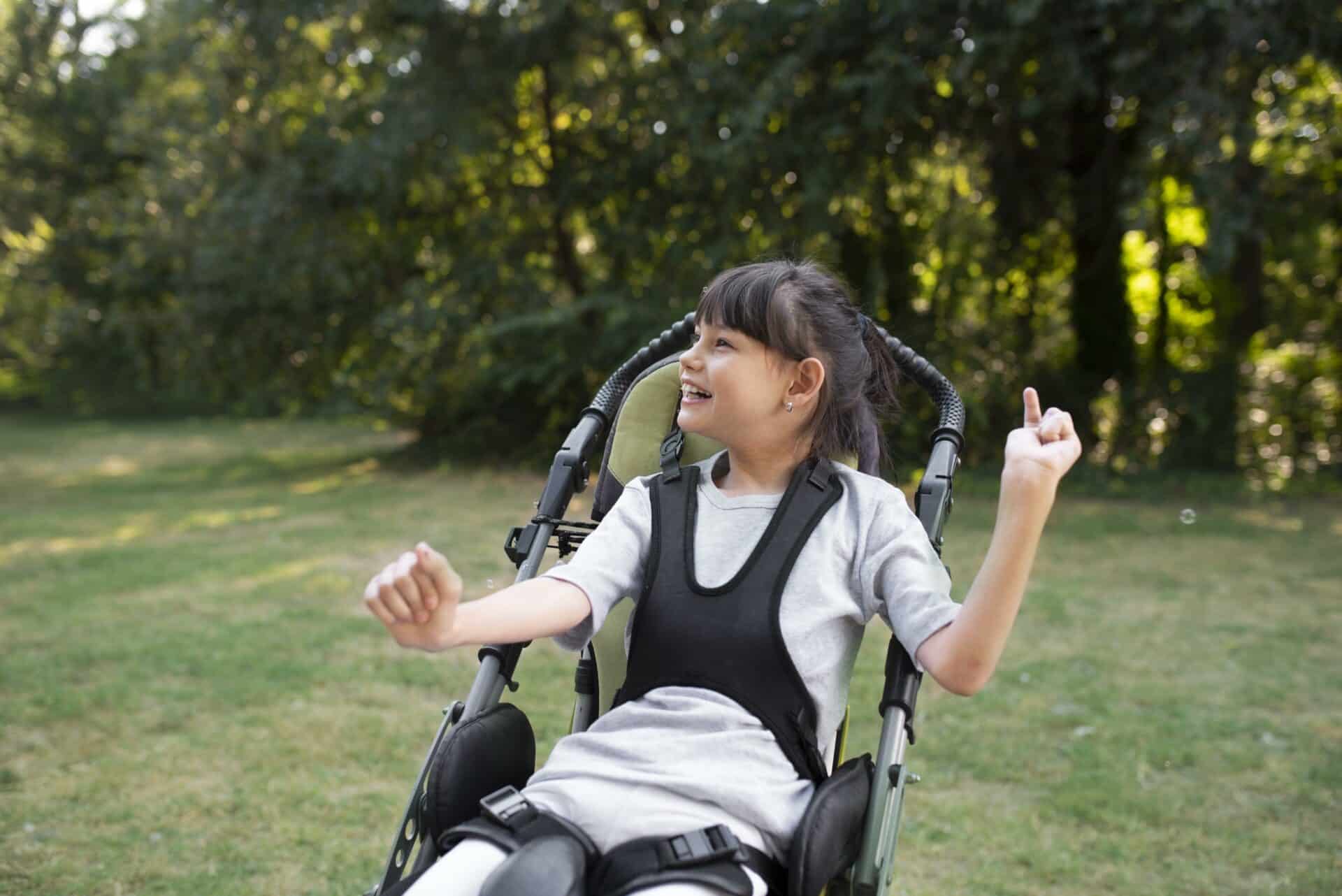What is Cerebral Palsy?

Cerebral Palsy (CP) is a group of lifelong neurological disorders that affect movement, muscle tone, and motor skills. It is the most common motor disability in childhood, with symptoms typically appearing during infancy or early childhood. While cerebral palsy is caused by abnormal brain development or damage to the developing brain, the specific cause can vary, and the condition can manifest in different ways.
In this article, we’ll delve into the causes, types, symptoms, diagnosis, and management of cerebral palsy to provide a comprehensive understanding of this complex condition.
Causes of Cerebral Palsy:
Cerebral Palsy is caused by abnormal brain development or damage to the developing brain, which can occur before, during, or shortly after birth. Common causes and risk factors include:
- Prenatal factors: Infections, maternal health conditions (e.g., thyroid disorders, diabetes), exposure to toxins or radiation, genetic factors, and prenatal brain injuries can increase the risk of cerebral palsy.
- Perinatal factors: Oxygen deprivation, premature birth, low birth weight, multiple births (e.g., twins, triplets), birth complications (e.g., umbilical cord problems, placental issues), and neonatal stroke can contribute to the development of cerebral palsy.
- Postnatal factors: Traumatic brain injuries, infections (e.g., meningitis, encephalitis), head trauma, near-drowning incidents, and other acquired brain injuries can lead to cerebral palsy.
Types of Cerebral Palsy:
Cerebral Palsy is classified into several different types based on the nature and distribution of motor impairments:
- Spastic CP: Characterised by increased muscle tone and stiffness, spastic CP is the most common type of cerebral palsy, affecting approximately 70-80% of individuals with CP.
- Dyskinetic CP: Dyskinetic CP involves involuntary movements, fluctuating muscle tone, and difficulty controlling movements, resulting in writhing, twisting, or jerky motions.
- Ataxic CP: Ataxic CP is characterised by poor coordination, balance problems, and shaky movements, making it difficult to perform precise movements or maintain stability.
- Mixed CP: Some individuals may have a combination of spastic, dyskinetic, or ataxic features, known as mixed CP.
Symptoms of Cerebral Palsy:
The symptoms of cerebral palsy vary depending on the type, severity, and distribution of motor impairments but may include:
- Delayed motor milestones (e.g., crawling, walking)
- Abnormal muscle tone (spasticity, rigidity, or floppiness)
- Involuntary movements (e.g., tremors, dystonia)
- Poor coordination and balance
- Difficulty with fine motor skills (e.g., grasping objects, writing)
- Speech and swallowing difficulties
- Gait abnormalities (e.g., toe-walking, crouched posture)
- Intellectual disabilities or learning difficulties (in some cases)
Diagnosis and Evaluation:
Diagnosing cerebral palsy involves a comprehensive evaluation by a healthcare professional, including:
- Medical history: Gathering information about prenatal, perinatal, and postnatal factors that may contribute to cerebral palsy.
- Neurological examination: Assessing muscle tone, reflexes, coordination, and motor function.
- Developmental assessment: Monitoring developmental milestones and evaluating motor skills, speech and language development, and cognitive function.
- Imaging studies: Using techniques such as MRI scans or CT scans to visualize the brain and identify abnormalities or signs of brain injury.
Management and Treatment:
While there is currently no cure for cerebral palsy, management strategies aim to improve function, alleviate symptoms, and enhance quality of life. Treatment options may include:
- Physical therapy: Exercises, stretching, and mobility training can help improve muscle strength, flexibility, and motor function.
- Occupational therapy: Activities and interventions to promote independence in daily living skills, fine motor tasks, and adaptive equipment use.
- Speech therapy: Techniques to improve speech and communication skills, swallowing function, and oral motor control.
- Assistive devices: Mobility aids, orthotics, communication devices, and adaptive equipment can help individuals with cerebral palsy navigate daily activities and enhance function.
- Medications: Medications such as muscle relaxants, antispasmodics, or botulinum toxin injections may be prescribed to manage spasticity, dystonia, or other symptoms.
- Surgical interventions: Orthopaedic surgeries, selective dorsal rhizotomy, or intrathecal baclofen therapy may be considered for severe spasticity or mobility impairments.
Prognosis and Outlook:
The prognosis for individuals with cerebral palsy varies depending on factors such as the type, severity, and distribution of motor impairments, as well as access to early intervention and supportive services. While cerebral palsy is a lifelong condition, early diagnosis, comprehensive treatment, and ongoing support can help individuals achieve their full potential, maximize function, and lead fulfilling lives.
Cerebral Palsy is a complex neurological condition that affects movement, muscle tone, and motor function. By understanding the causes, types, symptoms, diagnosis, and management of cerebral palsy, individuals, families, and healthcare professionals can work together to provide the necessary support, resources, and interventions to help individuals with CP thrive and reach their fullest potential. Through early intervention, comprehensive treatment, and ongoing support, individuals with cerebral palsy can overcome challenges, adapt to life changes, and lead fulfilling lives with dignity and independence.
Talk to us to find out how we can help
Cerebral Palsy care Guildford. Cerebral Palsy care Woking.